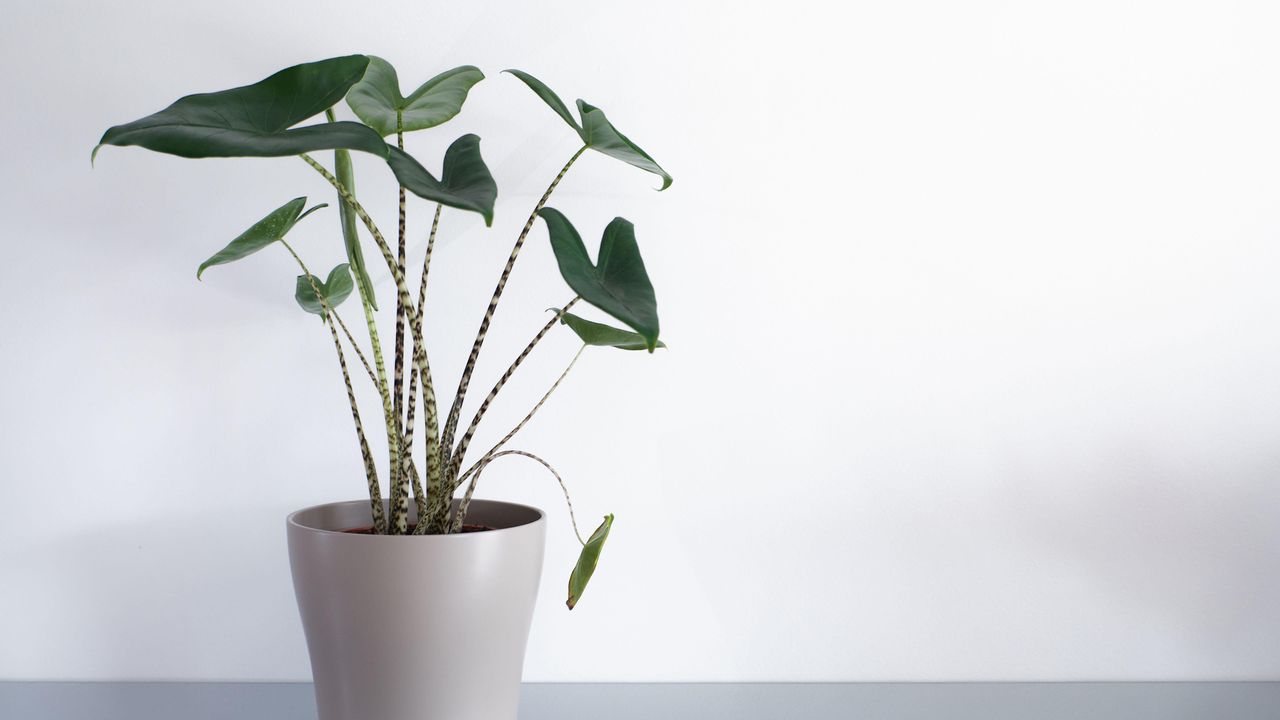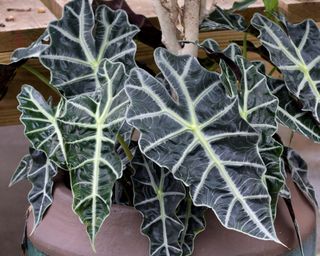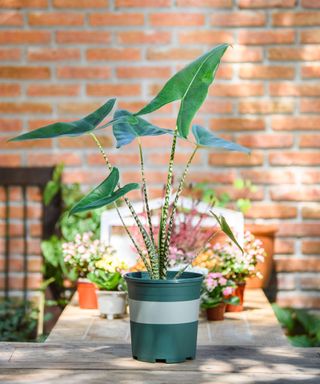Houseplant clinic: how often should you water elephant's ear plant?
How often should you water an elephant's ear plant? Find out the best watering technique to help this indoor plant thrive

How often should you water elephant's ear plants? Elephant's ear plants, or alocasia, are very trendy right now, and no wonder: they have beautiful, distinctively shaped leaves which do look a little like elephants' ears, juicy stems, and an upright growing habit that's very attractive.
However, not everyone reports success with this type of the best indoor plants. If your plant is browning, wilting, or its leaves are flopping over, you may be watering incorrectly. We've asked horticulture experts to explain how often you should water your alocasia plant to help it thrive.

Alocasia Amazonica
How often should you water an elephant's ear plant?
Elephant's ear plants are a little different from most houseplants in that they do like thorough watering. Where the advice with most houseplants is that if you allow them to a go a little too dry that's better than watering too frequently, this just doesn't apply.
Andrew Gaumond, Horticulturist, Botanist, & Director of Content at Petal Republic, explains that this is because elephant's ear plants 'are native to tropical and wetland regions so are accustomed to frequent watering cycles and particularly love soil bases that retain moisture.'
How often you water your alocasia will depend on the season. Andrew advises that 'in spring through summer, it's prudent to monitor the soil at least every
other day (whether you're planting in a garden bed, potting container, or
growing indoors) and water thoroughly when the top inch of soil feels dry
to the touch.'
It may also be a good idea to get a moisture meter for this type of plant – they can be useful when located near the base of the plant's roots for more accurate readings of the prevailing moisture content in the soil.

Alocasia zebrina
In the winter, you may be able to get away with watering your elephant's ear plant less frequently. Kristin Pohlig, from Ohio-based foliage and succulents experts Wild Interiors, points out that 'An over-watered plant will wilt and its roots will start to rot, with soupy soil. You want the soil to be damp, not soaking.'
It's all about finding a balance. Andrew says that 'the key with these plants is to never allow the soil base to dry completely. Growth will naturally slow during the late fall and deep winter months when watering can typically be reduced to every 5 to 7 days.'
How do you know you're underwatering your alocasia? The telltale sign, according to Andrew, is a 'slight yellowing or browning of the leaf tips which is often coupled with stunted growth or general wilting of the plant.'
What else should I know about caring for elephant's ear plants?
The main thing to remember is that alocasias, like other tropical plants, dislike sudden and extreme temperature fluctuations. Kristin recommends keeping these plants at a temperature range 'between 65˚F-85˚F.'
Elephant's ears also like a bit of grooming. Kristin recommends regularly removing dead leaves from your plant, 'which will help them grow full and uniform in their container.'
During the summer months, when the plant is actively growing, it's also a good idea to give it houseplant feed. By following these tips, your plant will certainly earn its place in your indoor garden ideas.
Anna writes about interior design and gardening. Her work has appeared in Homes & Gardens, Livingetc, and many other publications. She is an experienced outdoor and indoor gardener and has a passion for growing roses and Japanese maples in her outside space.
-
 An Update on Gardeningetc
An Update on GardeningetcA word from our publisher
By Beth Murton Published
-
 Do you need to chit potatoes? Find out what the experts say
Do you need to chit potatoes? Find out what the experts sayGrow Your Own Learn how to chit potatoes before planting them in the ground and you’ll be on your way to getting an earlier and bigger harvest
By Drew Swainston Published
